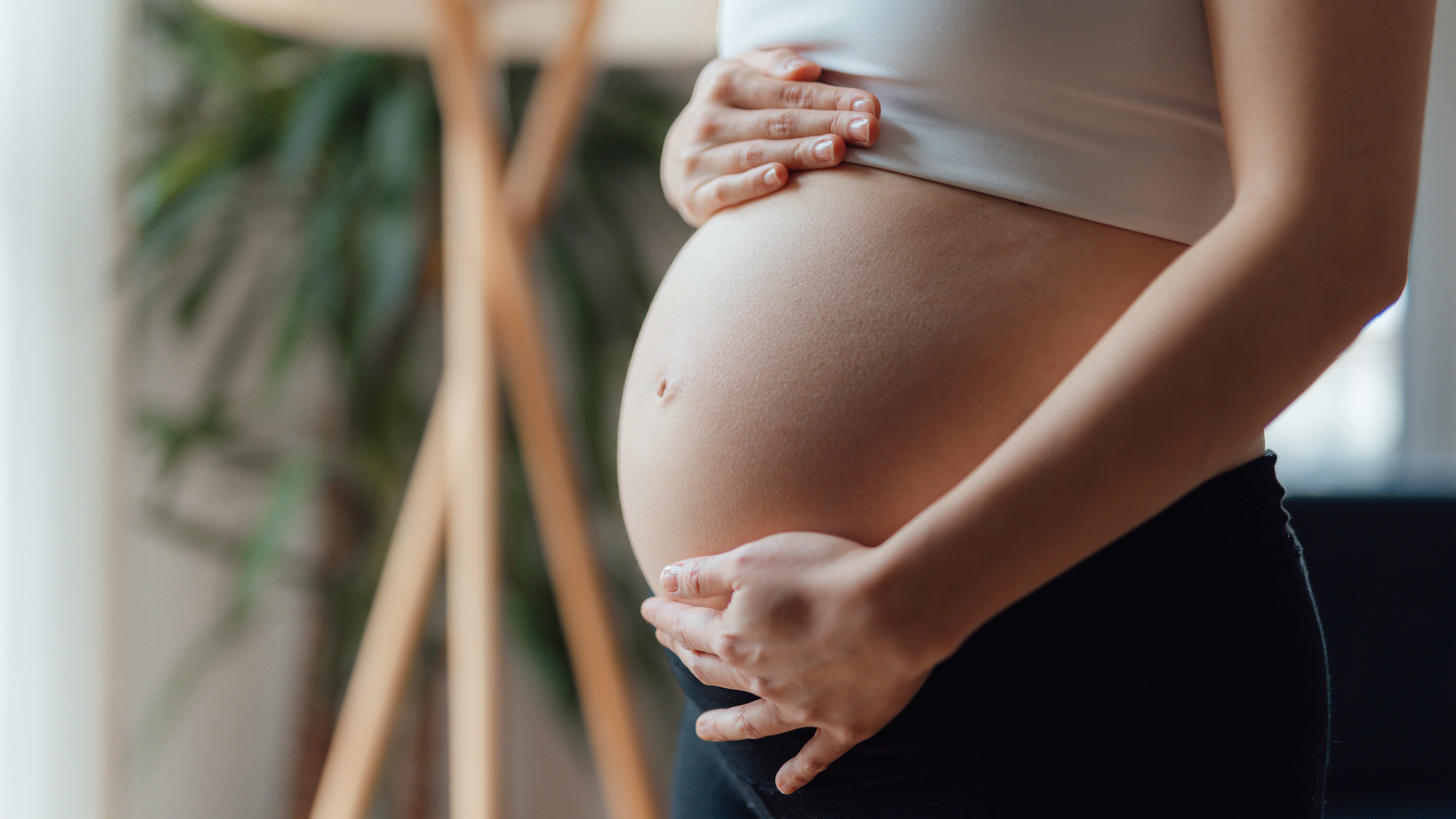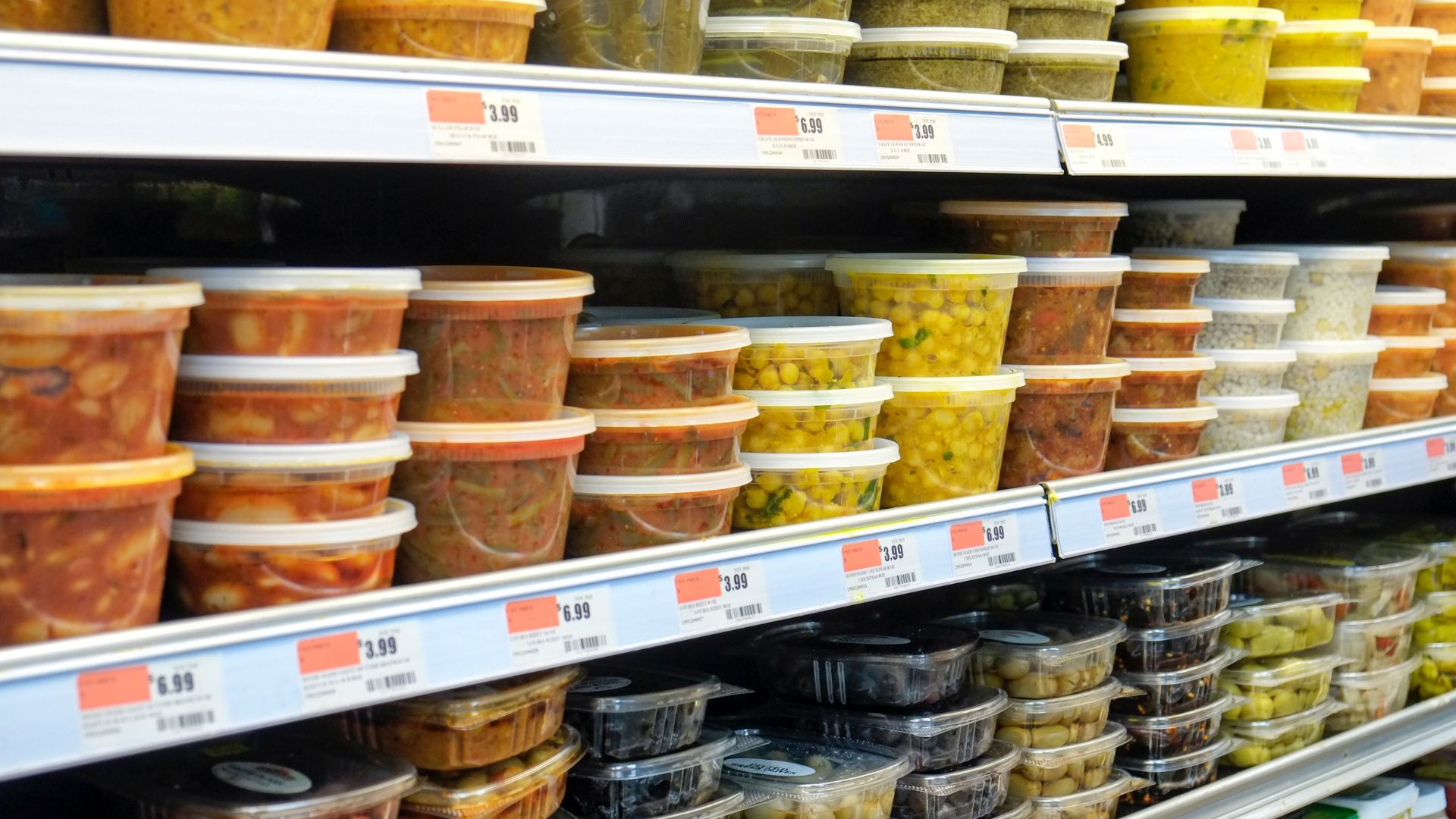Chemicals in plastics and cosmetics tied to preterm birth risk
Exposure to common chemicals in plastics during pregnancy has been tied to a risk of preterm birth in a new analysis.

Hormone-disrupting chemicals found in plastics and cosmetics may have been linked to nearly 56,000 preterm births that took place in the U.S. in 2018, new research suggests.
The researchers extrapolated that number from an analysis of data from more than 5,000 pregnant U.S. women. It suggests that exposure to phthalates — chemicals widely used in personal care products like nail polishes and hair sprays, as well as in food packaging — is associated with an increased risk of premature birth and a lower-than-average birth weight.
The study found that the likelihood of these pregnancy outcomes was tied to the concentration of phthalate breakdown products in the mother's urine. However, it didn't directly demonstrate that the chemicals caused the preterm births. Rather, it found a correlation.
The observed changes in the timing of births were on a scale of days, the new report says. However, the knock-on effects of a shortened pregnancy can be substantial.
Related: Common chemicals in toiletries may lead to early puberty
Normal human pregnancy lasts around 40 weeks, but births that occur before 37 weeks are considered preterm. "We know that even shortening gestation [pregnancy] from 40 weeks to 37 is associated with severe cognitive consequences, as well as additional health care and other related costs," Dr. Leonardo Trasande, lead study author and a professor of pediatrics at NYU Langone Health, told Live Science.
"So when you shift the population of people [giving birth] by even days or a week, you're increasing the number of preterm births substantially," he added.
Sign up for the Live Science daily newsletter now
Get the world’s most fascinating discoveries delivered straight to your inbox.
Over the 56,000 children's lifetimes, the additional medical costs and lost economic productivity tied to preterm birth could amount to between $1.6 and $8.1 billion, according to estimates in the new study, published Tuesday (Feb. 6) in the journal The Lancet Planetary Health.
Previous epidemiological studies have suggested that exposure to phthalates increases inflammation and disrupts the action of hormones, especially those related to reproduction. Research in humans has also linked the chemicals to conditions such as obesity, cancer and infertility.
People can be exposed to phthalates in many ways, for instance, by consuming foods that have touched phthalate-containing products or by inhaling the chemicals from the air. Phthalates are then broken down into metabolites in the liver and excreted in urine.
Previous studies hinted that phthalates might contribute to preterm birth, but their data were limited, Trasande said. For example, the work didn't include ethnically or racially diverse populations, and some phthalates included in those old studies have since been replaced by newer versions, he added.

The new analysis included data from women who took part in the National Institutes of Health Environmental Influences on Child Health Outcomes (ECHO) Program between 1998 and 2022. The researchers assessed the levels of 20 phthalate metabolites in urine samples taken at three points during pregnancy. They then compared these levels to each newborn's age at birth and birth weight. They also accounted for other potentially influential factors, such as the mother's age at birth and ethnicity.
Related: More than 50 new environmental chemicals detected in people
Across trimesters, the concentration of phthalate byproducts in the women's urine remained consistent. The most abundant phthalates were mono-ethyl phthalate, which is found in products such as perfume and soap, and phthalic acid, which is used to make polyester.
Women with the least exposure to each chemical — in the bottom 10% — faced no increased risk of preterm birth, but those in the top 10% had a significantly higher chance of the outcome. For instance, the top 10% of women with the highest exposure levels to a phthalate called Di-2-ethylhexyl phthalate (DEHP) were about 45% more likely to give birth prematurely than those with the lowest levels of the chemical.
Drawing on modeling studies of phthalate exposure and on published birth data, the team estimated that some 56,000 preterm births in 2018 may have been linked to the chemicals.
Several limitations of the data could have biased the study's findings, the researchers noted. For instance, the urine samples may not be a perfect reflection of exposure levels in the body, as they're only capturing a snapshot of what's already been metabolized. It's also possible that the women were exposed to other types of phthalates that the team didn't look for.
Nevertheless, "this important study shows how ubiquitous chemicals, such as phthalates, can have adverse health effects," Dr. Sophie Balk, a professor of pediatrics at the Albert Einstein College of Medicine and a pediatrician at the Children's Hospital at Montefiore who was not involved in the study, told Live Science in an email.
Unfortunately, it is often up to consumers to determine which products could contain phthalates and other potentially concerning chemicals, because that level of labeling is not required by federal law, she said.
"Some phthalates have been banned from children's toys and other children's items, but phthalates are still widely used in many personal care products and food packaging," Balk said. People wishing to limit exposure could consider avoiding products that contain the words "fragrance" or "parfum" in their ingredients, choosing fresh foods over packaged ones and avoiding microwaving food in plastic containers, she said.
This article is for informational purposes only and is not meant to offer medical advice.

Emily is a health news writer based in London, United Kingdom. She holds a bachelor's degree in biology from Durham University and a master's degree in clinical and therapeutic neuroscience from Oxford University. She has worked in science communication, medical writing and as a local news reporter while undertaking NCTJ journalism training with News Associates. In 2018, she was named one of MHP Communications' 30 journalists to watch under 30. (emily.cooke@futurenet.com)
Man gets sperm-making stem cell transplant in first-of-its-kind procedure
'Love hormone' oxytocin can pause pregnancy, animal study finds










